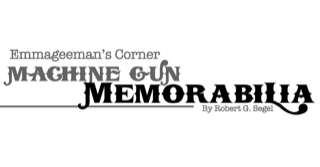By Robert G. Segel
I.Bronze Danish qualification shooting badge.
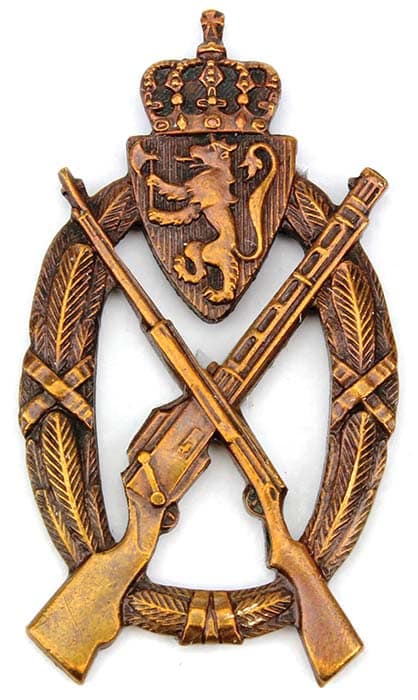
Features the King’s crown with prancing lion with axe on shield to the top of a wreath with a crossed rifle and Madsen M1914 machine gun to the center. Pin back.
II. Rare qualification sleeve badge for the 156th Battalion, Gurkha Parachute Machine Gun Company.
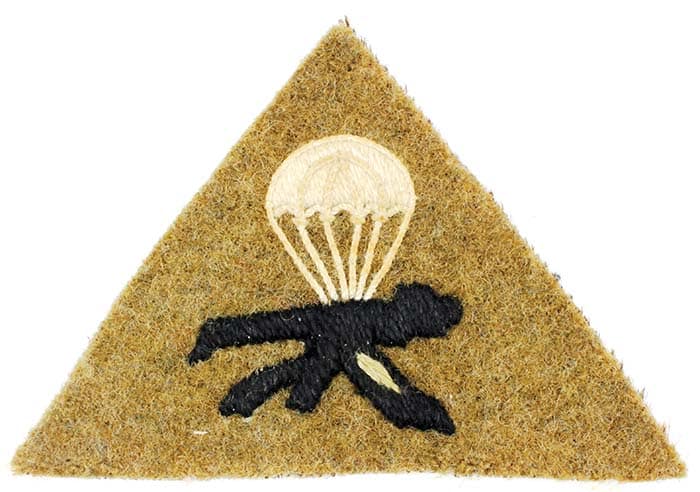
During World War II this company was part of the 44th Indian Airborne Division that served in Burma. Worn on the right sleeve by the airborne machine gunners. Rear still has the maker’s tag marked, “Supplied by Yousuf & Co., Military and Police Tailors, Ludhiana. (Punjab).”
III. Canadian Guard Forces infantry machine gunner sleeve trade badges 1985 pattern.
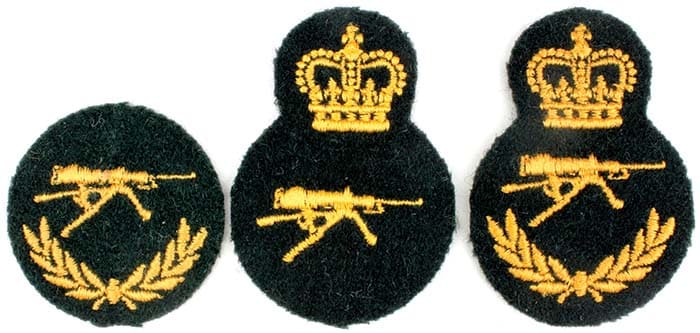
(Left) Level II with gold stitching .50 caliber machine gun over wreath on black felt background. (Center) Level III with gold stitching .50 caliber machine gun under the Queen’s crown on black felt backing. (Right) Level IV with gold stitching .50 caliber machine gun to the center under the Queen’s crown and over a wreath on black felt backing.
IV. Blackened bronze shoulder title for the Machine Gun Section, Gold Coast Regiment, Royal West African Frontier Force (MG/GCR/RWAFF).
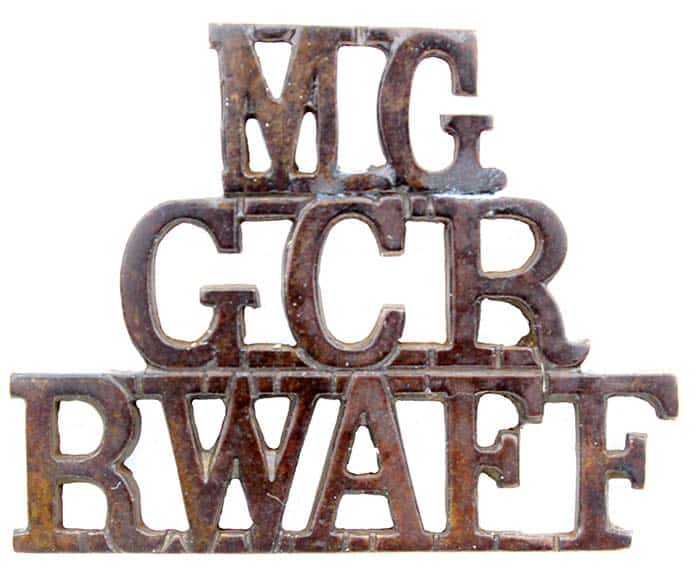
Worn 1928-1945. Two lugs to the rear. Due to fears of French colonial expansion in territories bordering northern Nigeria, the British Colonial Office in 1900 formed the West African Frontier Force (WAFF) to garrison the West African colonies of Nigeria, Gold Coast, Sierra Leone and Gambia. In 1928, it received a royal warrant, becoming the Royal West African Frontier Force (RWAFF).
V. Russian aviator’s badge circa late 1930s.
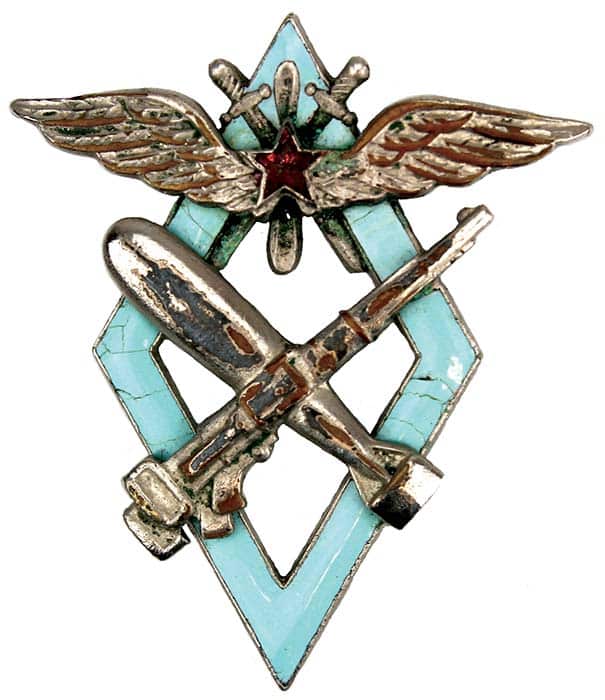
Blue enameled diamond with white metal insignia of propeller, crossed swords and spread wings behind a red enameled Soviet star at the top of the diamond. To the center is a crossed machine gun and bomb. Screw back.
VI. Cap badge for the Egyptian Motorized Machine Gun Corps.
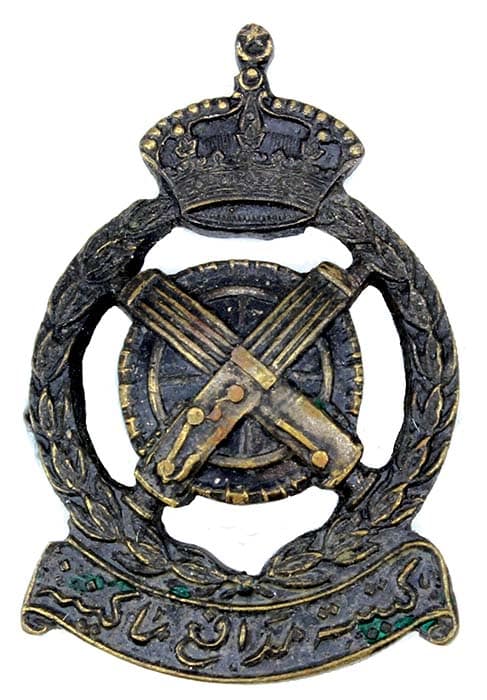
During the interwar period of King Faud I (1922-1936), officers in the Egyptian military were British. The cap badge shows crossed Vickers machine guns set against a wheel to the center with the King’s crown to the top of a wreath with an Egyptian banner at the bottom. Two lugs to the rear.
| This article first appeared in Small Arms Review V21N4 (May 2017) |



